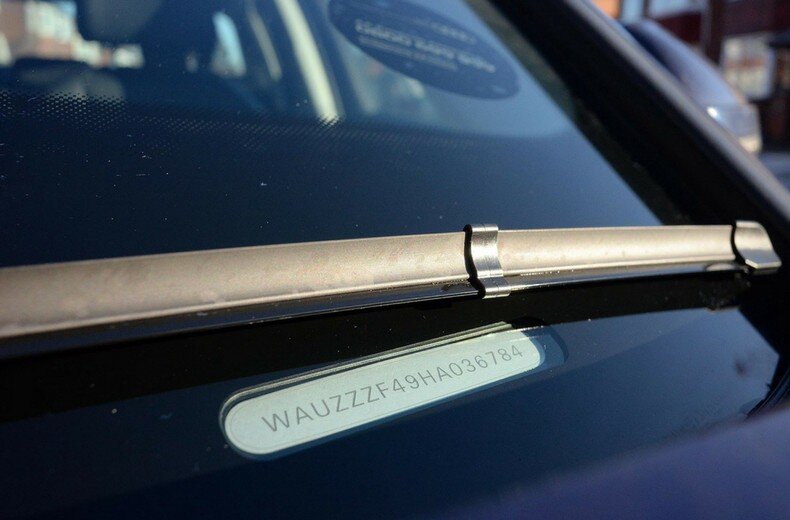While most car owners have likely had to recite their Vehicle Identification Number (VIN) when signing up for car insurance, there is still a widespread misunderstanding of a VIN number’s purpose, and what it tells you. After becoming standard practice in 1954 from the National Highway and Transit Safety Administration, a vehicle’s VIN is a unique 17 character to identify individual automobiles.

World Manufacturer Identifier: Characters 1 – 3
Within this group, the first digit identifies the country of origin, or in other words where the vehicle’s production was finally completed. For example, vehicles made in the U.S. begin with 1, 4, or 5. Canada is 2, Japan is J, and Germany is W.
The second character identifies the manufacturer. Oftentimes it’s the letter that begins the manufacturer’s name, but that is not always the case. For example, A is for Audi, G is for General Motors, but that “A” can also be used for Mitsubishi or Jaguar.
Depending on the manufacturer, the third character may identify the vehicle type (car, SUV, etc.). For example: ‘YV1’ represents Volvo Cars, while ‘YV2’ represents Volvo Trucks.
With the first two characters identifying Sweden as the Manufacturing country and Volvo as the company, the third character is the delineation between vehicle categories.
Vehicle Descriptor Section: Characters 4 – 8
Despite each manufacturer having a unique system for identifying their vehicles, characters 4-8 often include information such as the platform used, the model, and body style. Since the 1980s, however, most manufacturers have used the 8th character to identify the engine type when there is more than one option.
Example: for the 2007 Chevrolet Corvette, the 8th digit was either ‘U’ for a 6.0L V8 engine, or ‘E’ for a 7.0L V8.
Check Digit: Character 9
One of the most standardized elements of a VIN number, is the check digit. Utilizing a mathematical formula developed by the U.S. Department of Transportation, the check digit is used to identify invalid VIN numbers in an effort to reduce fraud.
Despite only being compulsory for vehicles in North America, most countries have adopted this practice with the exception of the UK where the check digit is not used.
Vehicle Identifier Section: Characters 10 – 17
The 10th character indicates the model year, using the letters A-Y (with the exception of I, O, Q, U, and Z), and numbers 1-9. Starting at ‘A’, and ending at ‘9’, the 10th digit of Vin Numbers reset every 30 years. For example, an ‘H’ could represent a 1987 model, but also a 2017 model.

The 11th character indicates the manufacturing plant at which the vehicle was assembled. Given that all manufacturers have their own set of codes, this is not standardized.
The last six digits, positions 12-17, are the production sequence line.
Where to find VIN
To find the VIN on the vehicle, check these places:
- Near the bottom of the windshield on the driver’s side
- Underneath the spare tire
- Driver-side doorpost when the door latches
- On the car frame near the apparatus that holds the windshield wiper fluid
If you are away from your vehicle, check one of these documents to find your VIN:
- Vehicle history report
- Owner’s Manual
- Vehicle Insurance Card
- The vehicle’s registration documentation
- Vehicle’s title
VIN Uses
There are quite a few practical reasons why someone would need to know your VIN. For example, in the event of a factory recall, auto manufacturers are able to efficiently track down and notify all affected car owners solely based on their VIN. On a much broader scale, a vehicle’s VIN serves as its DNA; tracking the vehicle’s ownership records, accident reports, and can hold service records if completed by authorized dealers.
However, the use case most applicable to us at Glassy, is when it comes time to replace a windshield. Oftentimes there are many windshield variations within a specific vehicle model, depending on the year manufactured, body type, or additional features. We use your VIN number to help our partner technicians find the right part, the first time, to provide you with the best service possible.

